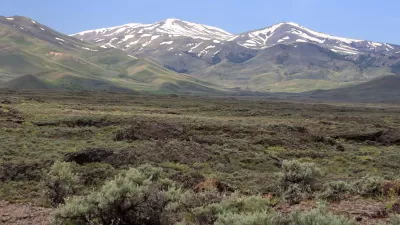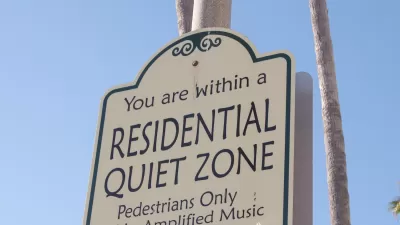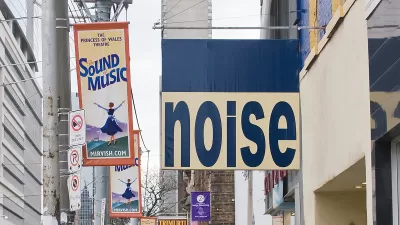Humans can't always hear the sound, but there is plenty of noise in what we think of quiet corners of the United States.

Researchers catalogue sounds of several varieties that exist beyond the perception of human hearing. This kind of research is intended to contribute to later discoveries about the noise in the world, but it also reveals plenty of surprises.
As an explainer post by Maggie Koerth-Baker describes, there's a lot to noise that humans don't perceive. "And when you start listening for the sounds we can’t hear, the loudest place in America can end up being right under your feet."
Scientists have tools that can detect these “silent” waves, and they’ve found a lot of noise happening all over the U.S. Those noises are made by the cracking of rocks deep in the Earth along natural fault lines and the splashing of whitecaps on the ocean. But they’re also made by our factories, power plants, mines and military.
To illustrate this point, Koerth-Baker cites the work of Omar Marcillo, staff scientist at Los Alamos National Laboratory, who "is trying to map these sources of small seismic signals in order to help other scientists track very small earthquakes that could help predict big, dangerous natural disasters."
To do that, Marcillo and his team used data collected over a decade by the U.S. National Seismic Network — 100 stations that track the movement of the ground all over the country. They combined that data with information about nearby industries to start figuring out which noises were likely human-made.
The result of that research is a map of seismic noise that reveals the noisiest places in the country to be located in the Great Plains of the Midwest.
But seismic sound isn't the only variety of noise we humans don't hear. There's also infrasound:
Infrasound travels through the air, just like the stuff we can hear does, but in this case, the molecular jiggles and vibrations are happening too slowly for our eardrums to convert them into information our brains understand. Infrasound can travel long distances and is often the unheard ripples set off by an audible sound that happened far, far away.
Scripps Institution of Oceanography researchers Catherine De Groot-Hedlin and Michael Hedlin are the researchers cited in this example.
"In their data, it’s Western states like Nevada, Utah and Idaho that turn up loudest, probably the result of nearby military facilities."
The article also a map of the loudest places for infrasound.
FULL STORY: The Loudest Places You Can’t Hear

Maui's Vacation Rental Debate Turns Ugly
Verbal attacks, misinformation campaigns and fistfights plague a high-stakes debate to convert thousands of vacation rentals into long-term housing.

Planetizen Federal Action Tracker
A weekly monitor of how Trump’s orders and actions are impacting planners and planning in America.

In Urban Planning, AI Prompting Could be the New Design Thinking
Creativity has long been key to great urban design. What if we see AI as our new creative partner?

Baker Creek Pavilion: Blending Nature and Architecture in Knoxville
Knoxville’s urban wilderness planning initiative unveils the "Baker Creek Pavilion" to increase the city's access to green spaces.

Pedestrian Deaths Drop, Remain Twice as High as in 2009
Fatalities declined by 4 percent in 2024, but the U.S. is still nowhere close to ‘Vision Zero.’

King County Supportive Housing Program Offers Hope for Unhoused Residents
The county is taking a ‘Housing First’ approach that prioritizes getting people into housing, then offering wraparound supportive services.
Urban Design for Planners 1: Software Tools
This six-course series explores essential urban design concepts using open source software and equips planners with the tools they need to participate fully in the urban design process.
Planning for Universal Design
Learn the tools for implementing Universal Design in planning regulations.
planning NEXT
Appalachian Highlands Housing Partners
Mpact (founded as Rail~Volution)
City of Camden Redevelopment Agency
City of Astoria
City of Portland
City of Laramie





























